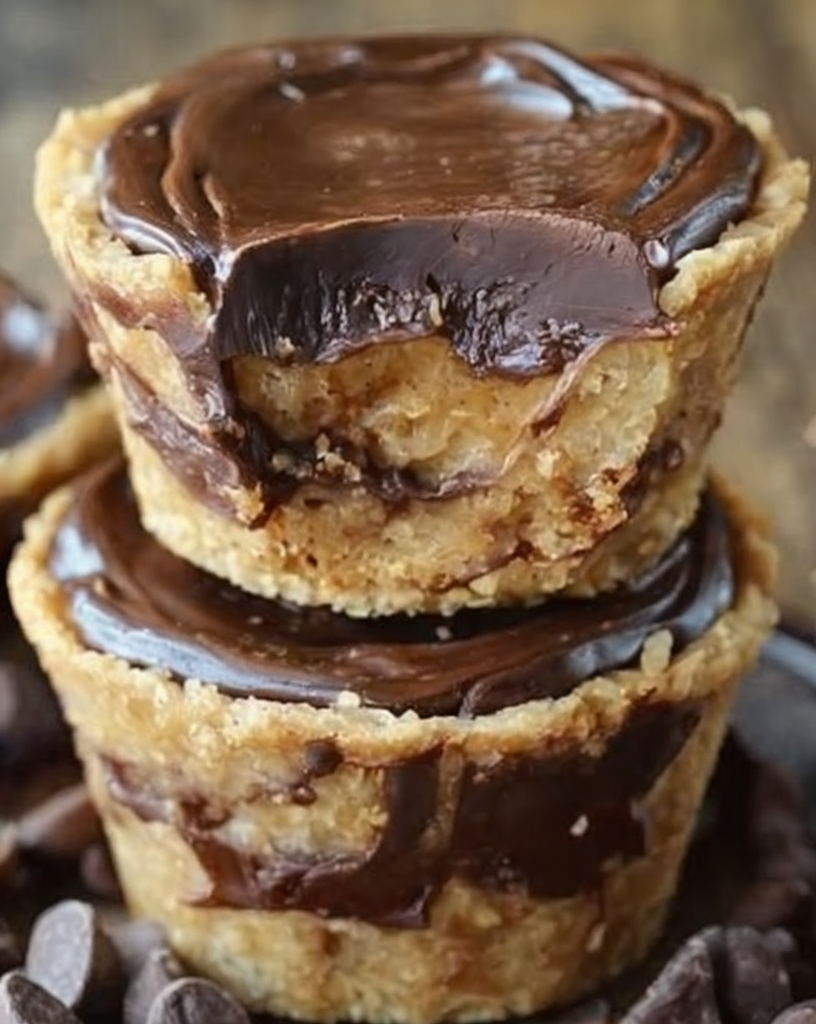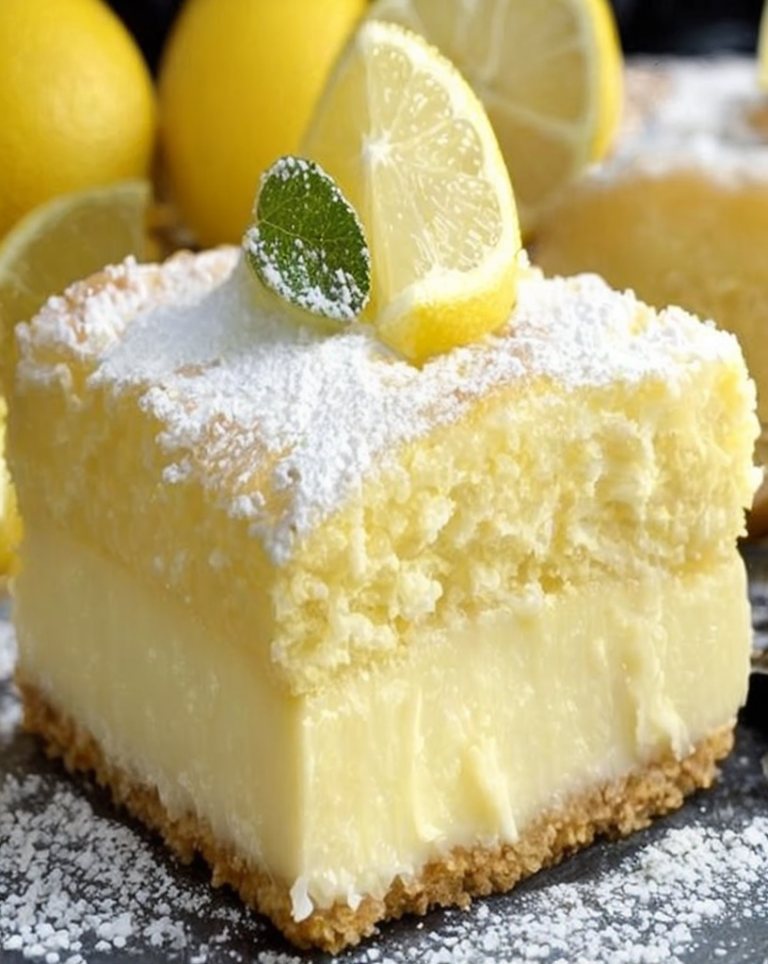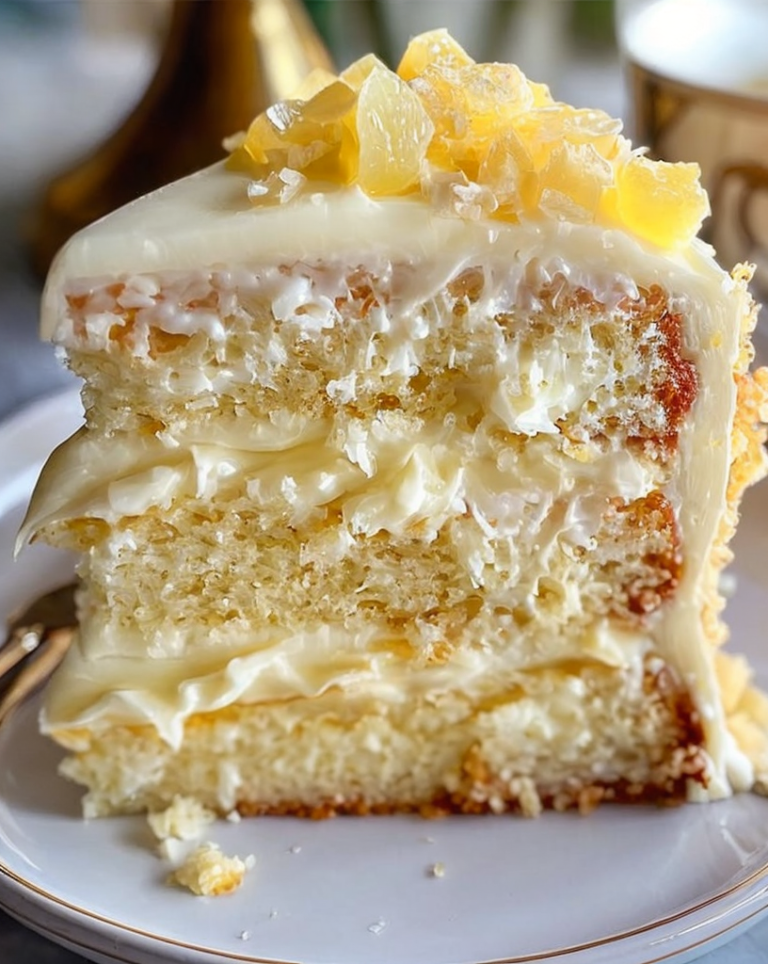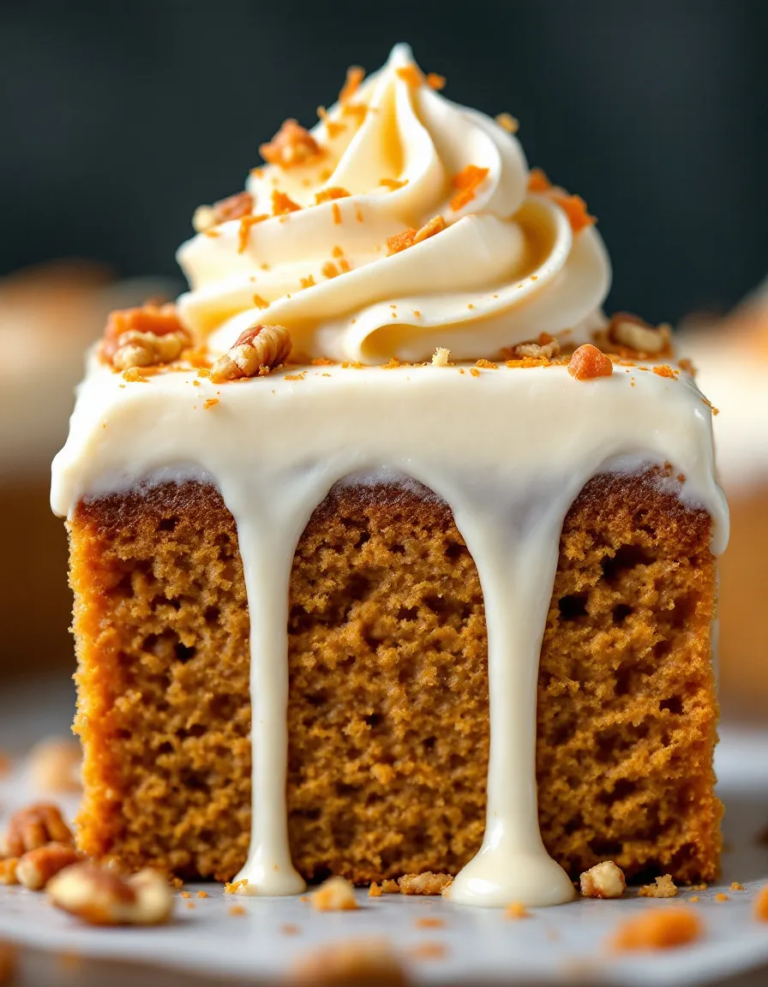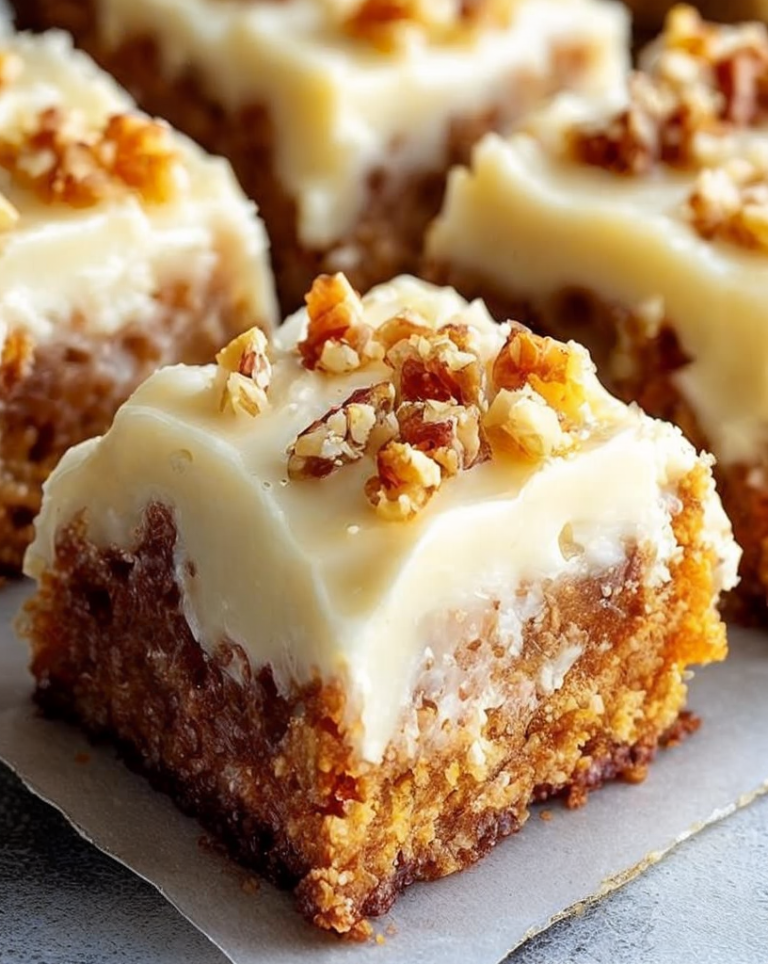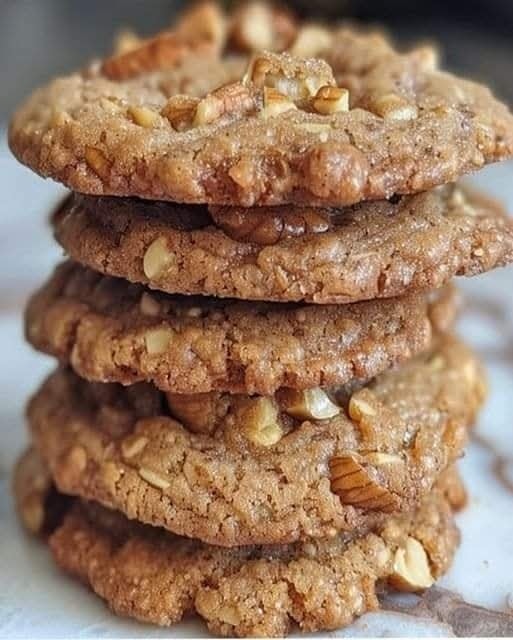Irresistible Mini Chocolate Peanut Butter Pies – Ultimate Family Favorite
Irresistible Mini Chocolate Peanut Butter Pies: A Sweet Delight
Indulge in the decadent flavors of mini chocolate peanut butter pies, a captivating blend that promises to satisfy your sweet cravings. These delightful little treats combine the rich, velvety texture of chocolate with the creamy, nutty allure of peanut butter, creating a harmonious flavor that is both sophisticated and comforting. Whether you’re hosting a dinner party or looking for a new dessert to try, these mini pies will make a memorable impression on your taste buds and your guests alike.
There is something magical about how chocolate and peanut butter come together in these mini pies. The sweet aroma of melted chocolate paired with the subtly salty fragrance of peanut butter is simply irresistible. As you take that first bite, the combination of creamy filling and a crumbly crust creates an enticing texture that melts beautifully in your mouth, offering a medley of flavors that are both bold and balanced.
Quick Recipe Highlights
- Flavor Profile: The richness of dark chocolate meets the creamy, nutty flavor of peanut butter, creating a sweet yet slightly savory taste sensation.
- Texture: A smooth, luscious filling encased in a crisp, crumbly crust provides an indulgent texture that is simply delightful.
- Aroma: The fragrance of roasted nuts and chocolate wafts through your kitchen, promising a heavenly dessert experience.
- Visual Appeal: These mini pies are beautifully adorned with swirls of chocolate and peanut butter, their glossy sheen catching the light.
- Skill Level Needed: Simple enough for beginners, requiring basic baking skills and minimal equipment.
- Special Equipment: Having a muffin tin and a pastry brush will enhance your baking experience for this recipe.
Recipe Overview
- Difficulty Level: This recipe is categorized as easy, making it accessible for bakers of all levels. The steps are uncomplicated, and the result is consistently delicious.
- Category: This dessert belongs to the sweet treat category, perfect for those who fancy a quick, indulgent end to their meal.
- Cuisine: While it draws roots from classic American dessert traditions, this recipe offers a contemporary twist with its miniaturized design.
- Cost: Affordable, using pantry staples like chocolate, peanut butter, and graham crackers, the cost is relatively low, making it a budget-friendly option.
- Season: Best enjoyed year-round, particularly great for summer picnics and winter holidays when sweet treats are in high demand.
- Occasion: Ideal for any occasion, whether a casual family gathering or an elegant dinner party, these pies deliver sweet satisfaction.
Why You’ll Love This Recipe
These mini chocolate peanut butter pies captivate with their unique taste and texture, blending the classic flavors of a beloved combination. The creamy filling, where chocolate meets peanut butter, delivers a decadent dessert experience. The crust adds a contrasting crunch, making each bite a delightful journey of textures that pleases any palate.
Convenience is a highlight of this recipe. With minimal ingredients and short preparation time, you can enjoy homemade gourmet pies even on a busy schedule. The option to make these pies ahead of time enhances their appeal for anyone wanting to prepare in advance for parties or gatherings.
Nutritionally, this dessert offers some redeeming qualities. Peanut butter is an excellent source of protein and healthy fats. By using dark chocolate, you can increase the antioxidant content, making these pies a more wholesome treat than many other sugary options.
The social aspect of serving mini pies is another reason you’ll adore this recipe. The individualized servings bring a touch of sophistication to the table, encouraging conversation and sharing. They are a stellar addition to any dessert spread and a surefire way to impress guests.
Their cost-effectiveness and accessibility further add to their charm. Basic ingredients are all it takes to achieve a dessert that looks and tastes like it came from a professional patisserie. Even for those on a budget, these pies allow for an indulgent experience without breaking the bank.
Historical Background and Cultural Significance
The harmonious blend of chocolate and peanut butter has been cherished for decades, particularly in American confectionery. The combination gained popularity in the early 20th century when affordable cocoa and peanut farming boomed, enabling their widespread availability.
Peanut butter has long been a staple in American households, celebrated for its nutritional benefits and versatility. When combined with chocolate, it creates a universally loved flavor duo that transcends generations and cultural boundaries.
The evolution of recipes incorporating these two ingredients has seen countless variations, yet the fundamental combination remains unchanged in its allure. Mini chocolate peanut butter pies highlight this classic pairing, offering a modern interpretation that appeals to both tradition and innovation.
Regionally, these flavors have been adapted into numerous desserts like pies, cookies, and candies. Each variation retains the signature blend of flavors while introducing cultural or regional elements that make them unique.
Ingredient Deep Dive
Chocolate, especially dark chocolate, plays a crucial role in this recipe. Its history dates back to ancient Mesoamerican cultures, revered for its rich, indulgent aroma and taste. Chocolates with higher cocoa content provide essential antioxidants beneficial for heart health and cognitive functions.
When selecting chocolate, opt for those marked with at least 70% cocoa content for a balance of sweetness and health benefits. Store in a cool, dry place, out of direct sunlight. If substituting, you might try milk chocolate for a sweeter taste, though it will alter the nutritional profile and flavor depth.
Peanut butter, loved for its creamy texture and nutty flavor, originated in the United States in the late 19th century. Packed with healthy monounsaturated fats and protein, it brings not just flavor but also nutritional value to the dish.
Choose smooth peanut butter for a consistent texture across the filling. Ensure it’s stored in a cool environment to prevent oil separation. For variations, almond butter can replace peanut butter for those with peanut allergies, though this may influence the overall taste and cost.
Common Mistakes to Avoid
- Using low-quality chocolate will prevent the pies from reaching their full flavor potential. Opt for high-quality options with a high cocoa percentage.
- Over-mixing the chocolate and peanut butter filling can result in a less creamy texture. Mix until just combined for optimal smoothness.
- Setting the crust too fragile can disrupt the pie’s structure during serving. Ensure they set well before adding the filling.
- Failing to preheat the oven can lead to uneven baking, compromising both texture and flavor.
- Skipping the chill time will affect the final texture and presentation of the pies. Allow adequate time for setting in the refrigerator.
- Using excessive filling may cause overflowing. Balance the quantity to maintain a neat and presentable pie.
- Choosing a peanut butter with excess oils can make the filling greasy. Opt for natural, homogenous versions.
- Not testing the pie firmness before serving; a soft pie won’t hold shape when removed from the mold.
- Being unaware of any dietary restrictions guests may have; plan for variations if necessary.
Essential Techniques
Mastering the combination of peanut butter and chocolate is key to achieving the right flavor profile. Blend gently to maintain the creamy consistency that defines these mini pies. Over-mixing can lead to a hardened or oily texture, reducing the smooth mouthfeel.
The crust should be compact and thin, supporting the filling without becoming too dense. Use the back of a spoon to press down the crust tightly against the mould and refrigerate briefly for firmness before adding the filling.
Chilling is crucial for the pies to set correctly. Allocate enough time for them to firm up, ensuring that the filling achieves the right creamy texture and the chocolate hardens appropriately for presentation.
Visual cues are vital. You’ll know the crusts are set when they look evenly golden and firm to touch, and the filling should appear glossy and smooth once set in the refrigerator.
Pro Tips for Perfect Mini Chocolate Peanut Butter Pies
For a richer taste, incorporate a pinch of sea salt into the filling to enhance and balance the chocolate’s sweetness and peanut butter’s nuttiness.
Experiment with layering the filling. Try adding a middle layer of caramel for a gooey surprise that intensifies the decadent experience.
Using a piping bag for the filling will not only make it easier to distribute evenly but also give your pies a professional finish with decorative toppings.
Consider toasting the crust briefly before filling to amplify its crunchy texture against the creamy filling. This small adjustment can make a significant difference in the texture balance.
Garnish with a sprinkle of cocoa powder or chopped nuts for an aesthetic finish that adds visual and textural contrast to the pies.
Chilling the pies longer than needed can actually enhance the flavor blend. Let them sit for an hour or two more for a deeper taste profile.
Variations and Adaptations
Explore regional adaptations by infusing the filling with different nut butters like almond or cashew for a unique twist that reflects global flavors.
Make seasonal adaptations by incorporating fruits. A layer of strawberry or raspberry puree can offer a refreshing contrast to the rich chocolate and peanut butter.
For dietary modifications, use gluten-free graham crackers or a nut-based crust to cater to gluten-sensitive individuals without compromising flavor.
Experiment with flavor variations by introducing vanilla or mint extracts into the filling, providing a new aromatic dimension.
Change up the texture by including crushed pretzels or cookies within the crust mixture, adding an extra crunch to the pies.
Adapt the presentation by using a layer of whipped cream or a drizzle of chocolate ganache for a dramatic visual impact, enhancing the pie’s elegance.
Serving and Presentation Guide
Ensure that each pie is plated with care, utilizing elegant saucers or dessert plates for an appealing presentation. Center the pie and consider adding a complementary sauce or garnish around it for added flair.
Garnishing ideas include sprinkling chocolate shavings, crushed peanuts, or a drizzle of caramel sauce, all of which can elevate the overall presentation while adding bursts of flavor.
Traditional accompaniments are light and simple, like fresh berries or a dollop of whipped cream, complementing the rich flavors of the pies without overpowering them.
Modern serving suggestions may involve setting up a dessert bar with various toppings, allowing guests to personalize their pies, encouraging creativity and interaction.
Consider the recommended serving temperature; these pies are best enjoyed chilled, though allowing a brief sit at room temperature enhances their flavor and texture.
Portion control tips include serving smaller pies or cutting larger ones into bite-sized pieces, making them suitable for a variety of gatherings while maintaining their elegant display.
Wine and Beverage Pairing
Pair these mini pies with a rich, full-bodied wine like a Cabernet Sauvignon or a Merlot, which complements the chocolate’s depth and enhances the peanut butter’s nutty undertones.
For non-alcoholic options, a dark roast coffee, rich in flavors and aromas, pairs beautifully, balancing the pies’ sweetness and providing an energizing compliment.
If tea is your preference, consider serving these pies with a bold black tea or a spicy chai, both offering contrasting flavors that enhance the dessert’s complexity.
Ensure beverages are served at an appropriate temperature; wines slightly below room temperature, coffee and tea hot, allowing their flavors to bloom alongside the dessert.
Offer additional serving suggestions such as homemade hot chocolate or a peanut-infused smoothie, for unique and complementary pairings.
Storage and Shelf Life
Store these mini pies in an airtight container in the refrigerator to maintain their freshness, ensuring the filling stays creamy and the crust crisp.
Temperature requirements should be kept consistent; avoid frequent temperature change to prevent moisture accumulation that might soften the crust.
Recommend using glass or BPA-free containers for storage to avert unwanted flavors or chemical seepage into the pies.
Signs of spoilage include a sour smell or seepage from the filling, indicating that the dessert is no longer safe for consumption.
For reheating, allow the pies to return to room temperature naturally instead of heating them directly, preserving their intended taste and texture.
Freezing is an option for extended storage, though ensure each pie is individually wrapped to prevent freezer burn, and defrost in the refrigerator for several hours before serving.
Make Ahead Strategies
Break down prep into stages, completing each a day before to free up time on the day of serving. The crust can be prepared in advance and stored covered in the refrigerator.
Consider storage between steps, such as keeping the filling mixture in a separate container until ready to assemble, then combine and refrigerate for freshness.
Assess the impact of making ahead on quality, noting how more extended refrigeration enhances the flavor harmony, giving the dessert more depth and intensity.
When assembling, focus on portion accuracy, ensuring each pie is equally filled for even presentation during serving.
Reheating guidelines should be discarded in favor of allowing pies to sit at room temperature before serving, safeguarding the texture integrity from reheating inconsistencies.
Incorporate fresh elements just before serving, like fresh fruit garnishes or extra drizzle toppings, for a burst of freshness and vibrancy.
Scaling Instructions
When halving the recipe, adjust ingredient measurements carefully to maintain flavor balance and a consistent texture, ensuring each mini pie is equally sumptuous.
For doubling or tripling the recipe, increase ingredient quantities proportionately, while keeping a close eye on texture during mixing to prevent over-dilution.
Adjust equipment, considering additional muffin tins or larger baking sheets, to accommodate the increased recipe volume while maintaining the integrity of each pie.
Modify timing, especially during chilling stages, ensuring all pies are set uniformly even when the batch size increases.
Consider storage needs when scaling up, ensuring adequate space and appropriate containers for larger quantities to maintain freshness and presentation quality.
Nutritional Deep Dive
A macro breakdown reveals these pies are rich in fats, particularly healthier unsaturated fats from peanut butter, while consisting of sugars primarily from chocolate and sweeteners.
Micronutrients include vitamin E and magnesium from peanut butter, with dark chocolate contributing iron and antioxidants, supporting health benefits in moderation.
Health benefits include the presence of flavonoids and other antioxidants in dark chocolate, potentially reducing heart disease risk and enhancing mood.
Consider dietary restrictions or caloric intake as these pies are indulgent, encouraging balanced consumption. Portion control becomes key in enjoying them responsibly.
Weight management tips include enjoying these pies as a special treat or pairing with fruit for a balanced dessert plate, making it a thoughtful indulgence.
Dietary Adaptations
For a gluten-free variation, substitute traditional graham crackers in the crust with gluten-free alternatives, maintaining a satisfying crunch without dietary conflicts.
To make these pies dairy-free, switch out regular chocolate for dairy-free versions and use a plant-based butter substitute in the crust and filling.
Adaptations for a vegan-friendly option can involve using coconut cream instead of dairy and ensuring all other ingredients comply with vegan standards.
Low-carb versions might utilize a nut-based crust with almond flour and sugar substitutes for sweetness, appealing to keto and paleo diet enthusiasts.
Creating low-FODMAP friendly versions requires careful ingredient choices, avoiding high-FODMAP triggers while preserving overall taste and texture.
For other specific diets, researching suitable ingredient replacements is crucial, ensuring flavor profiles remain enticing without sacrificing dietary needs.
The Recipe
Irresistible Mini Chocolate Peanut Butter Pies
Serves: 6
Prep Time: 15 mins
Cook Time: 5 mins
Total Time: 20 mins
Kitchen Equipment Needed
- Muffin tin
- Mixing bowls
- Whisk or electric mixer
- Spatula
- Pastry brush
- Refrigerator space
Ingredients
- 1 cup graham cracker crumbs
- 1/4 cup melted butter
- 1 cup creamy peanut butter
- 1 cup dark chocolate chips
- 1/2 cup heavy cream
- 1/4 cup powdered sugar
- 1/2 teaspoon vanilla extract
Directions
- In a mixing bowl, combine graham cracker crumbs and melted butter until well mixed. Distribute evenly into the muffin tin, pressing down firmly to form the crust. Chill for 10 minutes.
- In a medium saucepan, melt chocolate chips and heavy cream over low heat, stirring constantly until smooth. Set aside to cool slightly.
- In a separate bowl, whisk together peanut butter, powdered sugar, and vanilla extract until smooth and creamy.
- Fill the chilled crusts with peanut butter mixture, spreading evenly across each tin.
- Top with a layer of melted chocolate, smoothing it over the peanut butter layer.
- Chill in the refrigerator for at least an hour, allowing the pies to set properly.
- Garnish with chocolate shavings or crushed peanuts before serving, if desired.
- Carefully remove from the muffin tin and enjoy chilled.
Recipe Notes
- Substitute almond butter for a different nutty flavor.
- For a sweeter pie, use milk chocolate instead of dark chocolate.
- Top with whipped cream for added texture and flavor.
Troubleshooting Guide
Encountering texture issues with the pies? Ensure your filling isn’t over-whipped, leading to tough filling instead of creamy delight. Mix until just combined.
Struggling with flavor balance? Assess your chocolate choice; too sweet or too bitter can disrupt harmony. Aim for a well-balanced chocolate to complement the peanut butter.
Temperature problems can cause the crust to soften or the topping to liquefy if left uncold for too long. Make sure your refrigeration is consistent and sufficiently chilly.
Issues with equipment often stem from using improper tins. Silicone molds can offer easy release, while metal can better support the crust structure.
Ingredient substitutions should be carefully considered; alternative butters or chocolates must maintain similar texture and melt points to ensure consistency.
Timing concerns may arise if the pies aren’t adequately chilled. Give them ample refrigerator time to achieve the perfect set.
Recipe Success Stories
Our community of bakers treasures these chocolate peanut butter pies, with countless photos showcasing their individual spins on presentation, highlighting the recipe’s versatile nature.
Consistent success with gluten-free versions using almond flour proves its adaptability across diverse dietary needs, with readers praising the ease of substitution.
Readers have shared creative adaptations like adding a swirl of raspberry puree for a summer twist, bringing a refreshing contrast to the rich flavors, further solidifying its seasonal adaptability.
Suggestions such as forming pie pops inject playful creativity, especially for interactive party treats, emphasizing the recipe’s suitability for a wide range of occasions.
The shared photography tips have enabled many to capture the beauty of their creations, using lighting and angles to portray the pies as both elegant and enticing.
Frequently Asked Questions
What type of chocolate is best for this recipe?
Use high-quality dark chocolate with at least 70% cocoa for a rich taste that balances well with the peanut butter. It enhances the complex flavor profile and adds a depth that sweeter chocolates might lack.
Can I make these pies gluten-free?
Absolutely! Substitute the graham crackers in the crust with gluten-free alternatives. This small change ensures the pies remain suitable for those with gluten sensitivities while retaining their signature crunchy texture.
How should I store leftover pies?
Store leftover pies in an airtight container in the refrigerator to maintain freshness. They’ll keep well for up to 3 days, although their vibrant flavors are best enjoyed sooner rather than later.
Are there any vegan adaptations?
Yes, substitute dairy ingredients with plant-based alternatives such as coconut cream, and use vegan-approved chocolate to create a dessert that aligns with a vegan diet while remaining deliciously rich in flavor.
Can I prepare these pies in advance?
Definitely, these pies can be made ahead and stored in the refrigerator. Preparing them the day before allows the flavor to further meld together, offering an even more harmonious and delightful taste experience.
What should I serve alongside these pies?
Pair your pies with fresh berries or a scoop of vanilla or caramel ice cream to complement and contrast the pies’ rich, dense textures, offering a refreshing or creamy expansion of your dessert experience.
What alternatives can I use for peanut allergies?
If you’re catering to peanut allergies, almond butter or sunflower seed butter make excellent substitutes, offering a different yet delightful nutty profile that works beautifully with the chocolate topping.
How can I ensure the crust doesn’t fall apart?
Press the crust mixture firmly into the tin using the back of a spoon, ensuring it’s well-compacted. Chilling it briefly before adding the filling helps maintain its structure upon serving.
What’s the best way to transport these pies?
Keep them in their tins when transporting, covered with plastic wrap or a lid, to ensure each pie remains intact and ready for presentation, minimizing risk of any filling or topping disruption.
Are these pies suitable for a Keto diet?
With some modifications, such as using a nut-based crust and sweetener replacements, these pies can be adjusted to be keto-friendly while still maintaining the delightful combination of chocolate and nut flavors.
Additional Resources
Discover related recipes that explore similar flavor profiles, such as chocolate mousse or peanut butter cookies, each offering unique spins on decadent and luxurious sweetness.
Technique guides can offer tips on perfecting your pie presentation or mastering the perfect filling consistency, ensuring your success with similar desserts leads to culinary confidence.
Ingredient information provides a deep dive into the benefits and uses of cocoa and nut butter, expanding your knowledge and inspiring future recipe adaptations or experiments.
For those interested in equipment, recommendations for pie molds, mixers, and storage containers help improve your kitchen efficiency, making your baking experience smoother and more enjoyable.
Seasonal variations can guide you to adapt this core recipe for various times of the year, introducing fresh, in-season elements or themes that keep it exciting and relevant for any occasion.
Join the Conversation
Engaging with fellow dessert enthusiasts is easy on our social media platforms. Share your adaptations, photos, or questions, and view an array of community creations that inspire and motivate.
Photography tips offered by our readers show techniques for capturing your pies with flair, using natural lighting or props that emphasize their elegance and deliciousness.
Recipe reviews are always welcome, whether they highlight success or suggest improvements, as your feedback directly contributes to the vibrant, shared experience of our dessert-loving community.
Community engagement continues through monthly contests or challenges, encouraging experimentation and creativity that often lead to exciting, innovative takes on classic recipes such as these mini pies.
Explore the diverse range of recipe variations accomplished by readers, showing how a foundational idea can blossom into many delicious directions, sparking your culinary curiosity and experimentation.

